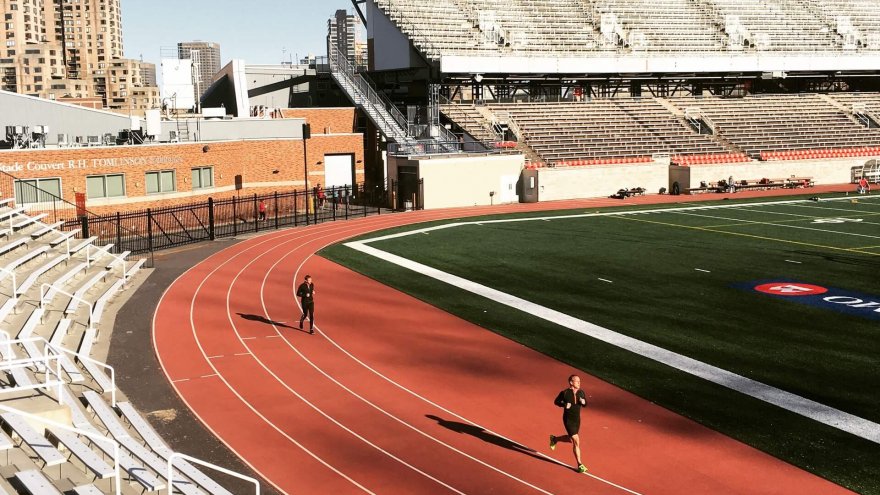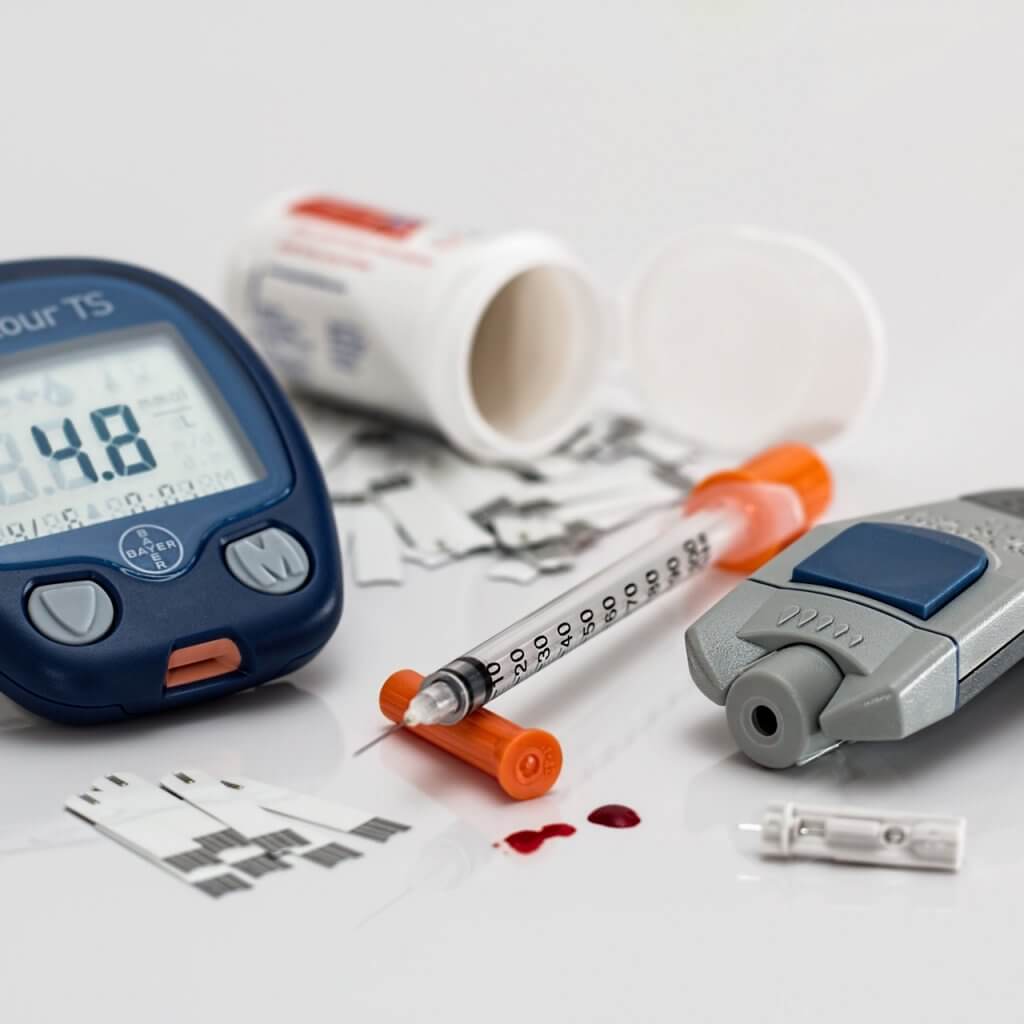Running and Hypoglycemia

Even if you don’t suffer from diabetes, exercise-induced hypoglycemia is still a risk factor for those of us who run. While diabetics in particular are the most vulnerable, it’s important for all active people to be aware of the signs and symptoms of low blood sugar, and to be prepared if it happens to them. We run to improve our health and to build a better lifestyle, but that doesn’t mean that there aren’t hazards involved in the process of becoming fit. The right balance of diet and exercise is not always easy to achieve, but making the effort to maintain proper blood sugar levels is one of the best ways to take responsibility for your well-being, especially if you’re an athlete.
Hypoglycemia is defined as a state of depleted glucose in the blood. Since your brain runs on glucose, which is a type of sugar converted from the foods you eat, an imbalance of those sugars can have a major impact on your health. To prevent a crash, you need to consume enough energy to supply your brain and nervous system with the nutrition they require, but this becomes more complicated by the toll that exercise can take on the body. For runners, this means that more glucose is necessary to refill the stores expended through your workout, or else hypoglycemia may become an issue. Someone experiencing low blood sugar might have a rapid heartbeat and feelings of anxiousness, continue to perspire even after exercising, and become shaky. It is therefore important to avoid over exercising, and to fuel up before a run, particularly with the complex carbohydrates that will slowly convert into the glucose you need. If left untreated, the effects of this condition can become severe. Without intervention, low blood sugar can lead to blurred vision, seizures, and a loss of consciousness. However, this is a problem that can often be prevented, and is unlikely to happen during a mild to moderate workout, but it can sometimes come on unexpectedly, so it’s important to know the facts in advance.

For healthy individuals who are not diabetic, experiencing hypoglycemia for the first time can be frightening. You may misinterpret it as anxiety when the jitteriness hits you, and it can be difficult to concentrate and think clearly. Headaches and dizziness are common as well, and you may have trouble catching your breath. These reactions usually happen later in the day after your workout, when your energy stores have been drained and not properly replenished. Since exercise draws so much energy, the time after your run can be hard on your body, so fueling up is essential to the recovery process. As you may not have ever had to pay attention to your blood sugar in the past, the effects of hypoglycemia can be a learning experience that teaches how important nutrition is for health and wellness. After eating, the glucose you absorb is stored as an energy source within the cells of your liver and, in greater proportion, in the muscles. When exercising, these stores are facilitated to power your active body, but if your workout outlasts the amount of glucose, it can result in a hypoglycemic attack that leaves you tired, trembling, and lightheaded. Taking immediate action to replenish that lost energy is the best strategy for stopping an attack.

If you have Type 2 Diabetes, your doctor has probably recommended exercise as part of your treatment plan. It can keep your weight down and prevent blood sugar spikes, but as with non-diabetics, it can also lead to hypoglycemia. Because your body has difficulty metabolizing glucose, the risk of a crash is much higher, so it’s crucial that you take the right precautions. Once you have been approved to proceed with physical activity, remember to always check your sugar levels before and after a workout to make sure they are in the healthy range. Bring a snack with you if you’re heading to the track or the gym, and don’t push yourself too hard, especially if you’re just getting started. Longer workouts should be avoided at first, and it may be a good idea to use your glucose monitor periodically as you exercise. Running can be a great way for diabetics to stay in control of their health, and the possibility of an attack should not keep you from making the effort to get the exercise you need. If one does occur, the fastest way to recover is by drinking juice, particularly orange juice, as its simple sugars will reach your bloodstream very quickly. Foods containing carbohydrates are also a good choice after a run, even if you aren’t feeling any ill effects. Get into the habit of looking after yourself and staying aware of the numbers, and the experience will be much safer.

The possibility of hypoglycemia after exercising is not an excuse to avoid going for a run. It isn’t something to be feared, but is just another responsibility to watch out for, like any other risk associated with fitness. The symptoms of an attack may feel severe, but it is important to stay in control and learn the facts in advance so you can take quick action to treat them. Eating a good diet rich in carbohydrates is essential for athletes, as it provides the right fuel to feed your active muscles. Watch out for any signs in the hours after a workout, and remember to replace the energy you have burned. Staying fit is a lifestyle, and like any other, it has its ups and downs, but for most of us, the benefits of running far outweigh the risks.
Latest Articles
 Is Running on a Treadmill Easier Than Running Outside?Runners have their own preferences, whether it is treadmill running, running outside on the road, or exploring trails. So...
Is Running on a Treadmill Easier Than Running Outside?Runners have their own preferences, whether it is treadmill running, running outside on the road, or exploring trails. So... Is It OK to Use Trail Running Shoes on the Road?While trail running shoes can be used on roads, especially in situations where a runner encounters mixed terrains or pref...
Is It OK to Use Trail Running Shoes on the Road?While trail running shoes can be used on roads, especially in situations where a runner encounters mixed terrains or pref... How to Fix Sore Quads After Running?Rest, ice, gentle stretching, and over-the-counter pain relievers can help soothe sore quads after running. Also, ensure ...
How to Fix Sore Quads After Running?Rest, ice, gentle stretching, and over-the-counter pain relievers can help soothe sore quads after running. Also, ensure ... 10 Fruits With The Most Electrolytes to Replace Sports DrinksThese fruits are high in electrolytes such as potassium, magnesium, and calcium, essential for hydration, muscle function...
10 Fruits With The Most Electrolytes to Replace Sports DrinksThese fruits are high in electrolytes such as potassium, magnesium, and calcium, essential for hydration, muscle function...

